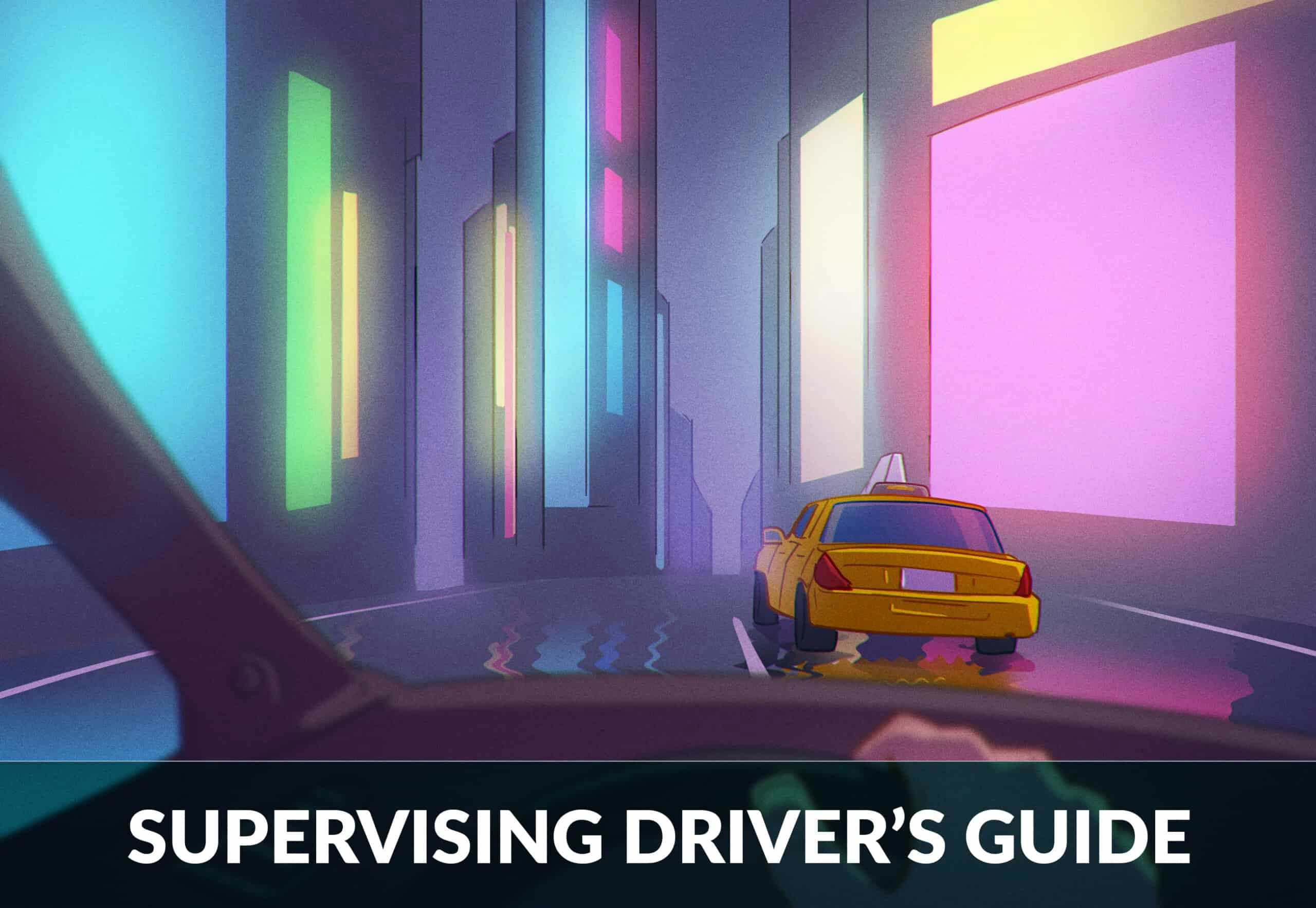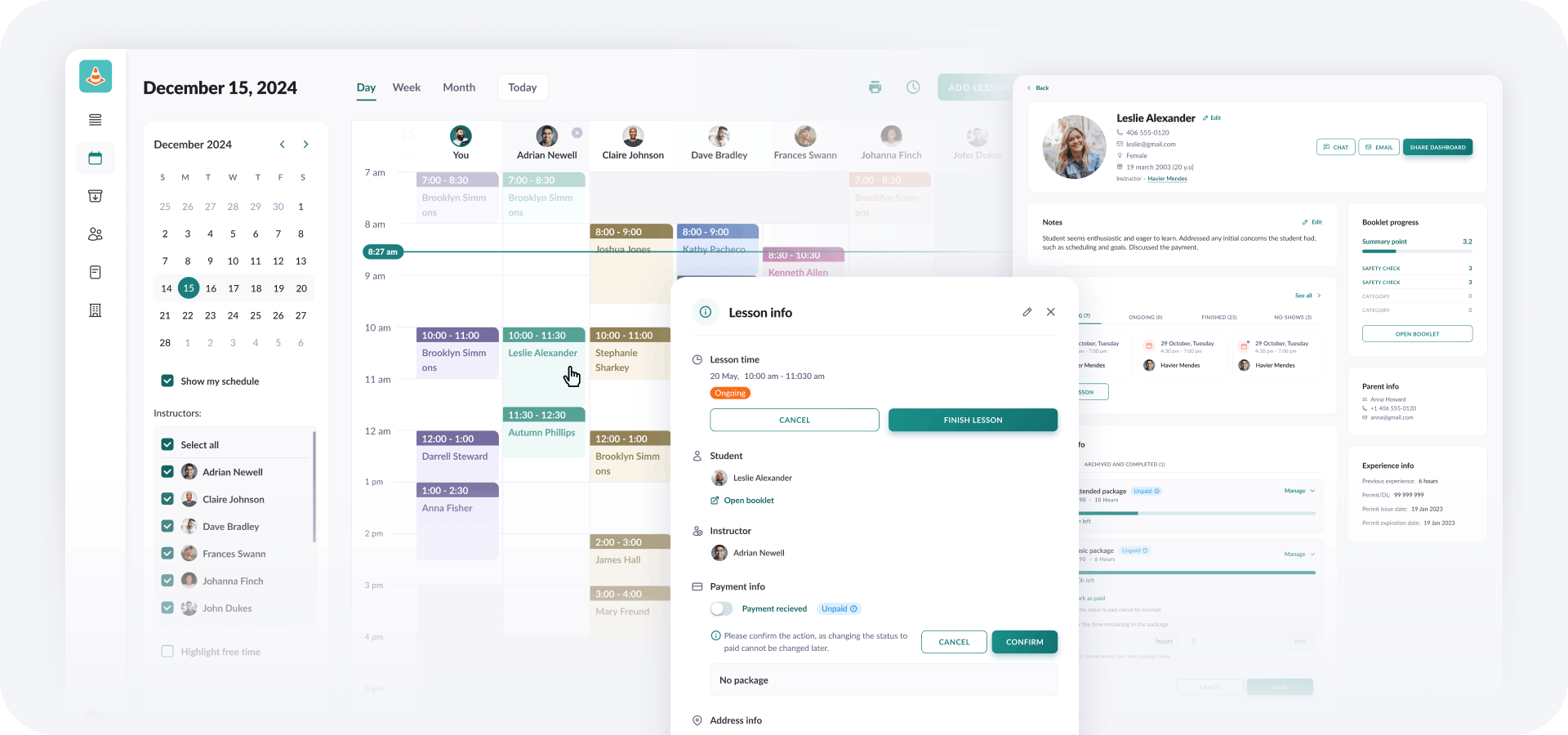
Teaching Someone to Drive
Teaching someone to drive is a huge responsibility, and being well-prepared is essential. In this guide, we’ll cover what you need to know to have successful driving lessons, from planning lessons to practical teaching techniques (including a checklist).
Legal Requirements Before You Start
- Insurance Coverage: Ensure your insurance will cover a student driver in case of an accident. Know what your insurance will and will not cover before starting any road practice.
- Vehicle Inspection: Have your vehicle inspected to make sure it is road-worthy. Tires should be in good shape and properly inflated. All fluids should be topped off. There should be no warning lights on the dashboard, mysterious leaks, or strange sounds.
- Age Requirements: Verify that you are qualified to teach someone to drive. Most states require you to have a full valid license and be at least 21 years old.
First Driving Lesson Walkthrough
Before you leave for driving practice, it is essential to establish clear communication and guidelines between you and your student. This preparation ensures a structured and safe learning environment in an empty parking lot, where the initial driving practice will take place.
Leadership and Control
As a teacher, you hold the authority regarding the timing, location, and structure of each driving lesson. Safety is a joint effort. Your role is to provide calm and clear directions, while your child’s task is to follow these instructions accurately.
Communication Vocabulary
Your ability to communicate effectively is key for safety. You and your teen/student should know these terms to communicate the actions you want them to take.
- “Go”: Initiate movement (e.g., “Go forward”, “Go backward”, “Go right/left”, “Go – no accelerator” [to idle]).
- “Easy”: Reduce speed by easing off the accelerator.
- “Squeeze”: Gently apply brakes to decrease speed.
- “Squeeze-Squeeze-Squeeze”: Brake quickly and firmly to stop immediately.
- “Cover”: Place the left foot on the brake pedal without pressing it.
- “Stop”: Smoothly brake to a complete halt (e.g., “Stop at the stopline”, “Stop at the end of the driveway”, etc.)
- “Turn”: Upcoming change of direction. Best practice is to name location and then action. (e.g., “At the next stop-sign turn right”, “At the next intersection, turn left)
Keep your teen safe on the road! Our comprehensive parent training course gives you step-by-step lessons, videos, and peace of mind. The guide will tell you exactly what skill to work on each drive, how to do it, and even shows a short video beforehand so you and your teen can see a pro demonstrate it. It’s like having a virtual instructor in the car with you, and is used by schools across the nation to ensure effective teaching.
Intervention Techniques
Prepare your student for situations where you might need to take control of the vehicle. Your child should not be startled or upset by you taking control (grabbing the steering wheel, applying the parking brake, turning off the vehicle). Likewise, you should not be upset that you have to take control. Clarify that your intervention, including potential overreactions, is part of the learning process.
Being prepared to intervene during driving lessons is crucial.
- Be ready to assist with steering if necessary.
- Familiarize yourself with using the handbrake for controlled stopping, avoiding abrupt pulls.
- Learn to turn off the vehicle or shift to neutral in case your child doesn’t respond to slowing or stopping commands.
Pause if Needed
If either of you feels overwhelmed, anxious, or fatigued, it’s crucial to stop the driving lesson. Maintaining a positive and stress-free environment is key. The lesson experience should be positive. Neither you nor your child should be upset if one of you wants to stop the lesson for ANY reason.
Checklist for Teaching Someone to Drive
- Start in a Safe, Controlled Environment
- Begin in an open parking lot or quiet area with minimal traffic.
- Allow the new driver to get comfortable without traffic pressure.
- Get Accustomed to the Vehicle
- Show essential functions (emergency brakes, lights, blinkers, speedometer).
- Practice adjusting seat and mirrors, using defrosters, wipers, etc.
- Emphasize Attention to Surroundings
- Teach looking ahead, checking mirrors frequently, and scanning for hazards.
- Maintain a “safety space” around the car.
- Keep Sessions Short and Frequent
- Aim for three to four thirty-minute sessions weekly.
- Avoid long sessions to prevent overwhelm.
- Remove All Distractions
- Turn off the radio, put away phones, remove clutter.
- Keep discussions focused on driving.
- Progress Gradually to More Challenging Environments
- Low-Speed, Low-Traffic Areas: Practice on quiet streets; focus on lane discipline, anticipating exits, approaching stops.
- Vary Routes and Conditions: Introduce different times, weather, and traffic on familiar roads.
- Highway Driving: Practice merging, maintaining speed, and safe following distances during low-traffic times.
- Have a Comprehensive Plan
- Basic Driving Skills: Cover turning, braking, accelerating, intersections, right of way, changing lanes, merging, and speed control.
- Defensive Driving: Teach hazard anticipation, safe following distances, and courteous driving.
- Advanced Skills: Include passing, emergency vehicle response, and turning lanes.
- Driving in Different Conditions: Practice in bad weather, different times of day, and with various passengers.
- Vehicle Maintenance: Go over pumping gas, fluid checks, tire changes, and dashboard warning lights.
- Know When to Pause or Stop the Lesson
- Watch for stress or fatigue (tight grip, holding breath, frustration).
- Take breaks or end the session if needed.
Are You Ready to be a Supervising Driver?
Before you begin, ask yourself if you are ready to be a supervising driver. How do you react to stress? Do you have patience? To teach effectively, you will need to be patient, calm, and compassionate at all times. If you have high anxiety, get frustrated easily, or are prone to road rage, you may want to consider hiring a professional driving instructor instead.
Teaching someone how to drive is a significant task that requires patience, knowledge, and dedication. It’s your responsibility to ensure that you cover all the necessary skills and information to help them become a safe and competent driver. Your student is counting on you.

Avoid beginner mistakes with expert advice
Build road test confidence and reduce anxiety
Make at-home lessons a success with our parent guide
Recommended articles
Ace your DMV test, guaranteed
Want to Be the Top School in Your Area?
- Simple & automated admin
- More time for teaching
- #1 learning materials for students


